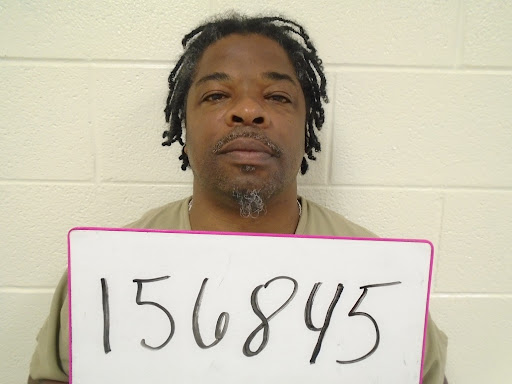Quincy Omar Cross grew up in western Tennessee, far from the center of the storm that would come to define his life. Before 2000, he had no ties to Mayfield, Kentucky—no connection to Jessica Currin or to her inner circle of friends. But in April 2008, Quincy was convicted of one of the most horrifying crimes in the state’s recent memory: the kidnapping, rape, and murder of 18-year-old Jessica Currin.
Today, Cross is incarcerated at the Kentucky State Penitentiary, serving multiple life sentences without the possibility of parole. His convictions include capital kidnapping with a murder aggravator, intentional murder, first-degree rape and sodomy, abuse of a corpse, and tampering with physical evidence. His case, however, has drawn national attention not for its resolution, but for the doubts surrounding its integrity.
- “Lost in the Night: Who Murdered Jessica Currin?”: 20/20 Reports October 24 2025
- Who Was Jessica Currin & What Happened to Her? 2025 Update & Background
Contents
The Crime That Changed His Life
Jessica Currin disappeared in late July 2000 and was found dead behind Mayfield Middle School on August 1. Her burned body was discovered with a belt nearby, and law enforcement theorized that she had been strangled and sexually assaulted. That belt—later used to argue for strangulation—was never conclusively linked to Quincy Cross. In fact, no physical evidence ever connected him to the scene, and a second autopsy found the cause of death to be undetermined.
Despite this, Quincy was arrested years later based on the testimonies of three young women: Victoria Caldwell, Vinisha Stubblefield, and Rosie Crice. All three would later recant, claiming their stories were coerced by law enforcement and influenced by citizen investigators, particularly Susan Galbreath, who had become deeply involved in the case alongside BBC journalist Tom Mangold.
A Trial Based on Testimony, Not Evidence
At Quincy’s 2008 trial, prosecutors relied heavily on witness statements. Victoria Caldwell testified that Cross struck Jessica and strangled her with a braided belt. Stubblefield supported this account, but both women admitted they had lied to police early on. Rosie Crice, the third witness, said under oath that she had been instructed to lie and was later charged with perjury.
No forensic evidence—no fingerprints, DNA, or eyewitnesses—placed Cross at the scene. The belt found at the scene did not bear his DNA. Even the diary Victoria Caldwell used to corroborate her story has since come under scrutiny. A forensic expert testified at trial that its ink could not be matched to any commercially available formula from 2000, raising the possibility it was written later.
An Unlikely Connection to the Co-Defendants
One of the most startling elements of Quincy Cross’s conviction is that he barely knew the people he was accused of conspiring with. He met Tamara Caldwell two years after the murder while in jail. The third co-defendant, Jeffrey Burton, he has never met—except at trial. Despite this, the narrative pieced together by the prosecution painted them as a coordinated group that abducted and murdered Jessica Currin.
After Quincy’s conviction, Burton and Tamara Caldwell entered Alford pleas—legal agreements where defendants maintain their innocence but concede that prosecutors had enough evidence to convict. Both have consistently maintained they were not involved.
Fighting for Freedom and the Truth
Since his conviction, Quincy Cross has maintained his innocence. His case is now being championed by the Kentucky Innocence Project, which has filed multiple motions to vacate his conviction. New affidavits from both Caldwell and Stubblefield claim they were manipulated by police and community members eager for closure. One even alleges she was paid for her testimony and threatened with prosecution if she did not comply.
The case has been further complicated by the 2021 tornado that destroyed the Graves County courthouse, eliminating key documents and evidence. However, new motions seek to retest DNA on items found at the scene, including a belt, hairs, cigarette butts, and a Gatorade bottle believed to have contained the accelerant.
Support from an Unlikely Ally
In a rare and powerful development, Jessica Currin’s father, Joe Currin, has publicly voiced his belief in Quincy’s innocence. Once a vocal advocate for prosecution, Joe now says he is not convinced the right person was convicted. He supports a re-investigation and is calling for justice—not just for his daughter, but for Quincy as well.
Joe’s shift has added momentum to Quincy’s legal fight. “When you’ve got more people hiding the truth than trying to get to it,” he said, “it’s kind of hard to do.” He joins a growing chorus of voices calling for a full evidentiary hearing to examine new claims of misconduct, fabricated evidence, and coerced testimony.
Where Quincy Cross Stands Now
As of October 2025, Quincy Cross remains behind bars. The Kentucky Innocence Project has requested a hearing that would allow new evidence to be presented, including updated forensic testing and reanalysis of disputed materials. Quincy’s legal team is hopeful that the court will grant the opportunity to fully re-examine the conviction that has kept him imprisoned for over 17 years.
His story is now part of a broader national conversation about wrongful convictions, the power of media narratives, and the limits of justice in small-town America. Whether the court will give Quincy Cross another chance to clear his name remains uncertain—but the spotlight on his case continues to grow.
More “Lost in the Night: Who Murdered Jessica Currin?”
- “Lost in the Night: Who Murdered Jessica Currin?”: 20/20 Reports October 24 2025
- Who Is Quincy Cross & Where Is He Now? The Man Convicted in Jessica Currin’s Murder Now Fighting for His Freedom
- Who Was Jessica Currin & What Happened to Her? 2025 Update & Background

